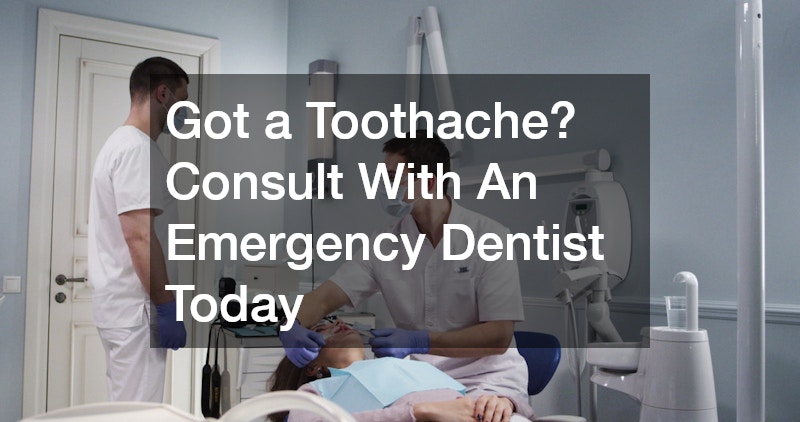Knowing when to seek emergency dental care can significantly impact your oral health and overall well-being. Delaying treatment for dental emergencies can lead to worsened conditions, increased pain, and potentially more expensive and extensive treatments in the future. Understanding the importance of immediate attention in critical situations can save you from unnecessary complications.
What is Considered a Dental Emergency?
Understanding Dental Emergencies
An emergency dental situation is typically characterized by severe pain, bleeding, infection, or risk of tooth loss. Unlike non-urgent issues, emergencies require immediate examination and intervention to address acute conditions effectively.
Recognizing the difference between a true emergency and a non-urgent dental problem helps determine the appropriate steps to take.
Common Dental Emergencies
Common dental emergencies include knocked-out teeth, abscesses, severe toothaches, and extensive damage to tooth structures or restorations. Such incidents often arise unexpectedly, requiring prompt care to alleviate pain and protect oral health integrity. Addressing these situations swiftly can prevent further damage and aid in preserving the affected teeth.
Signs You Need Immediate Care
Signs indicating the need for an emergency dentist include excruciating pain, continuous bleeding, swelling that impairs breathing, and visible damage to dental work. These symptoms suggest an urgent need for professional attention to prevent complications. Ignoring such warning signs can prolong recovery and lead to more severe health issues.
How Do I Find an Emergency Dentist?
Locating Emergency Dental Services
Finding an emergency dentist involves a few key steps, including using online resources, contacting local dental offices, and seeking referrals from your regular dentist. Many clinics offer after-hours services specifically tailored for emergencies. Quick action ensures that you receive the care necessary to manage dental emergencies effectively.
Insurance and Emergency Dentistry
Understanding your insurance policy’s coverage for emergency dental visits is crucial in planning and managing unexpected costs. While some policies may cover a portion of emergency treatments, others might require out-of-pocket payments. Reviewing your insurance plan in advance can help mitigate financial stress during emergencies.
Alternative Options for Urgent Care
If an emergency dentist is unavailable, exploring alternative options such as hospital emergency rooms or urgent care facilities may provide temporary relief. These options can help manage pain or infection until a dental professional can be consulted. Being prepared with alternative plans ensures continuous care in crisis situations.
What Should I Expect During an Emergency Dental Visit?
Initial Assessment and Diagnosis
Upon arriving at the emergency dental office, a thorough assessment of symptoms and dental history is conducted to determine the issue. Diagnostic tools such as X-rays may be used to pinpoint the root cause of the problem. This evaluation provides a comprehensive understanding necessary for devising an appropriate treatment plan.
Common Emergency Dental Procedures
Common procedures during emergency visits may include root canals, tooth extractions, or repairs to fractured teeth. The goal of these interventions is to alleviate pain, restore function, and prevent further damage. Dentists prioritize swift and effective treatments to protect both immediate and long-term oral health.
Post-Visit Care and Instructions
Following an emergency dental procedure, patients receive specific aftercare instructions to promote healing and prevent complications. These may include medication recommendations, dietary changes, and follow-up appointments for further evaluation. Adhering to these guidelines is essential for successful recovery and maintaining oral health stability.
How Can I Prevent Dental Emergencies?
Maintaining Oral Hygiene
Consistent oral hygiene practices, including brushing and flossing, play a significant role in preventing dental emergencies. Keeping the mouth clean and free of plaque reduces the risk of decay and infection. Regular home care routines are the first line of defense against unexpected dental issues.
Protective Measures During Activities
While engaging in sports or other activities, using protective gear like mouthguards minimizes the risk of dental injuries. These protective measures effectively shield teeth from impact or trauma. Simple precautions can significantly reduce the likelihood of emergencies requiring immediate attention.
Regular Dental Check-Ups
Scheduling routine dental check-ups identifies potential problems before they escalate to emergency status. Regular exams allow for early detection and management of issues that might not present immediate symptoms. Staying proactive with dental visits helps maintain optimal oral health and prevents avoidable emergencies.
What Are the Costs Associated with Emergency Dental Care?
Understanding the Costs
The cost of emergency dental care can vary significantly depending on the severity and nature of the treatment required. Factors such as the procedure type, location, and clinic policy influence overall expenses. Being informed about typical price ranges aids in financial planning for unexpected dental visits.
Ways to Manage and Reduce Expenses
Cost reduction strategies include exploring clinics offering payment plans, seeking care in non-profit dental programs, and negotiating fees when possible. Taking proactive steps to mitigate expenses eases the financial burden associated with emergency care. Understanding available options helps in accessing affordable and necessary treatments.
Financial Assistance and Payment Plans
Many dental offices offer financial assistance programs or flexible payment plans to accommodate patients facing financial difficulties. Engaging with office staff to explore these options can facilitate access to care without overwhelming financial strain. Recognizing available financial resources provides a pathway to necessary emergency interventions.
In conclusion, understanding when and why to see an emergency dentist can alleviate pain and prevent further damage. Recognizing signs of a dental emergency, knowing where to seek help, and comprehending the associated costs are crucial steps in managing oral health proactively. Educating yourself about emergency procedures ensures a prompt and effective response in times of need.



